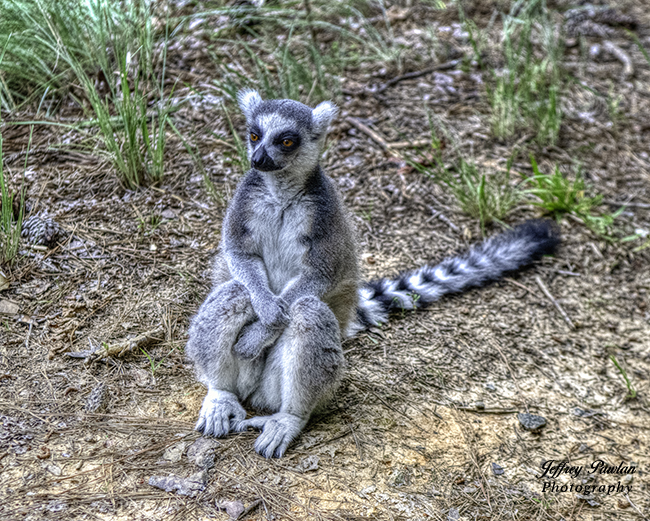By Jeffrey Pawlan

Meditating ring-tailed lemur in enlightened Buddha pose (at the Duke Lemur Center). Photo by Jeffrey Pawlan.
Visiting Madagascar changed my life and introduced me to the Duke Lemur Center
After viewing a National Geographic documentary about lemurs, my wife and I decided to arrange a two-week trip to Madagascar. In the fall of 2017, we first went to two private reserves in South Africa because our flight was connecting though Johannesburg and we also wanted to adjust to the large time-shift before beginning the rigorous trip in Madagascar.
Seeing and photographing the endangered animals in Africa gave me a sense of the large impact that humans have had on the earth and its natural wonders. It prepared me for what I was about to experience in Madagascar.
When we arrived in Madagascar, I was surprised to find that the people were generally living at a poverty level at the low end of what I had experienced living in India.
We had a very knowledgeable guide who drove us throughout approximately half of the island. We were thrilled to see many species of lemurs in different locations. They are wonderful playful beings, but we noticed that many of them looked as though they were under stress from shrinking habitat. I asked our guide why the lemurs were not thriving and what was the government doing to help them.
I found out that the lemur population was severely threatened by the decimation of their forests. There are several reasons the forests were being cut up or removed:
Sapphire mining is taking place in what was supposed to be protected forests. Each of these mines also included roads for their vehicles. That broke the forest into patches which prevented the lemurs from moving to other fragments when their trees were insufficient to sustain them.
Many of the forests were also cut down and made into rice paddies.
The zebu cattle raised for milk, meat, and as draft animals require additional forest be burned to create grazing land. As we drove for hundreds of miles, we saw fires blazing to remove the forest.
I took many photos of the lemurs, lizards, plants, and countryside. At home, I wanted to confirm the identification of the lemur species in my photographs. I did a Google search and found the Duke Lemur Center. I had not known about them before. Not only did I obtain the needed identification of the lemurs in my photos, but when I became aware of the tremendous work the Duke Lemur Center was doing to conserve and study them, I decided to dedicate my life to the preservation and conservation of lemurs and other endangered animals. We sent a donation to the Duke Lemur Center.
We visited the Duke Lemur Center in June 2018. I took several photos and I created a website of my photographs. The photos are a tool to move people to action. I realize that people will protect the things they love. Please look at: https://jeffreypawlanphotography.com.
The lemurs are under Animals, Madagascar. Please look at the other sections as well.

